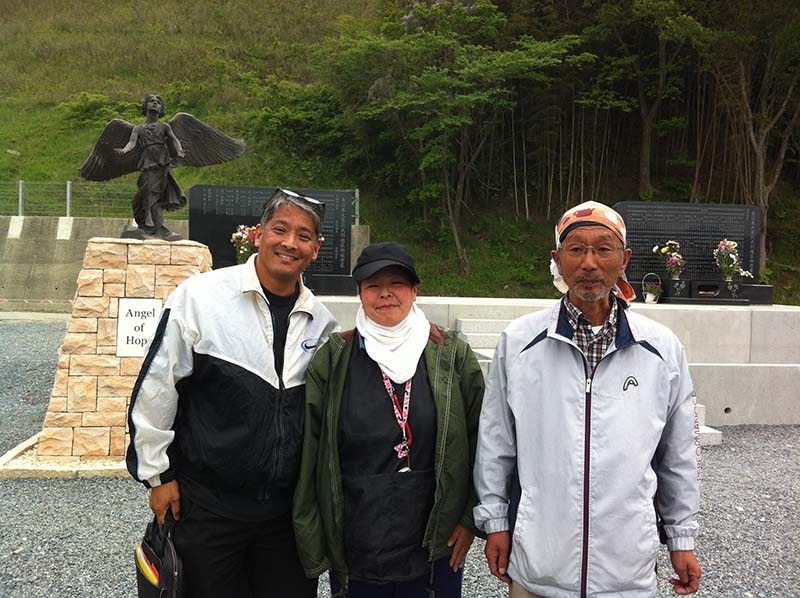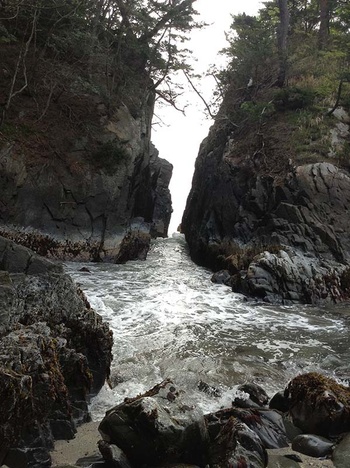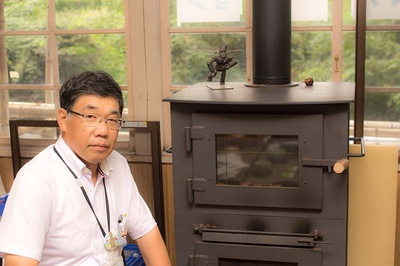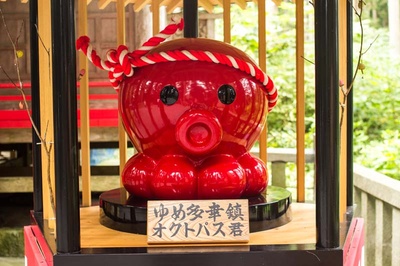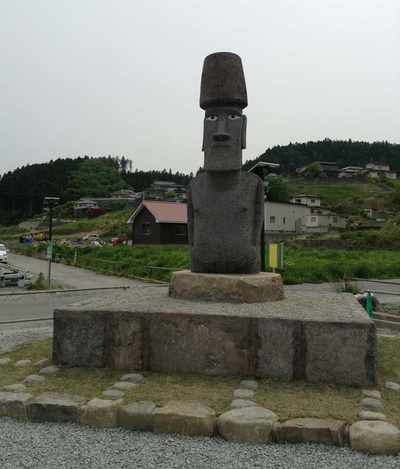After the “Tohoku Insights 2013” event at JAMsj [Japanese American Museum of San Jose] last year, I was inspired to visit the Tohoku area and see the aftermath first hand. My journey was made richer because I was able to visit the region with professional photographer and journalist Darrell Miho, a co-founder of Ai Love Japan. Because the mission of Ai Love Japan is to document survivor stories and provide direct aid to the people most affected by the earthquake, Miho has visited the Tohoku area more than a dozen times since the disaster of March 2011. We made the trip the weekend of May 24, 2013, and visited the cities of Matsushima, Nagatsura, Ishinomaki, and Minamisanriku. During our travels, we met many locals who surprised me with their positive energy and enthusiasm.
Our first stop was Matsushima, Miyagi Prefecture, one of the three most scenic spots in Japan. The area is surrounded by hundreds of tiny islands (shima) covered in pine trees (matsu), hence the name Matsushima. This area was protected by the many tiny islands that acted as breakers for the massive tsunami. We had lunch at a restaurant that had been previously covered in mud; but because the entire inside had been refurbished, it was like new. It was apparent that the number of visitors to the area was definitely at a low when we were there.

Darrell Miho, Tomomi Ogawa, and Yasukichi Takeyama in front of a memorial at Kahoku Okawa Shogako. Photo: Michael Sera
Our next stop was to the north at Nagatsura, where we met Yasukichi Takeyama and Tomomi Ogawa in front of what remained of the Okawa Shogakko (elementary school). This school and its students were overcome by the tsunami. The teachers never thought the tsunami would reach them until it was too late. Of the 108 students enrolled at the school, 74 students lost their lives. Caught by the tsunami, half of the students tried to escape but instead were pushed up against the mountain side. The students who went home early that day survived, as well as one student who didn’t listen to the teachers and climbed the mountain. There were eleven teachers in total, but only one survived. The principal, who was at his son’s graduation, also survived.
Takeyama and Ogawa showed us around the area. Because most of the area was overcome by sea water, all of the farming was wiped out. Ogawa works at an oyster farm. Her home is still standing, but because none of the utilities (electricity, water, and sewer) are functional, her home has been condemned. In total, 418 people lost their lives, with 38 people still unaccounted for. Both Takeyama and Ogawa go to Okawa Shogakko every day to maintain the make-shift memorial, water the plants, and explain the situation to visitors. The locals want the school to be demolished, since the very sight of it only brings back bad memories. Those who want to preserve it are, in general, from the government and not from the area.
The next day we visited the city of Ishinomaki, site of the highest number of causalities due to the population density of that area. This used to be a large fishing town and is now being slowly rebuilt. We met Takatoshi Hayashi and his wife, who own a kimono shop. The shop was covered in mud but is now cleaned up and open for business.
We then traveled to the next town of Minamisanriku. Three quarters of the city is gone, and nobody is allowed to live in the low-lying areas in case of another tsunami. Only shops and businesses are allowed in these areas. We stopped for lunch at Sansa Café, where Tomotaka Uchida, the 35-year-owner, makes a spicy katsukare (pork cutlet and curry over rice). We also met Jun Suzuki, who works at Sansa Café. He was nice enough to take Darrell and I to a beautiful coastal area called Kamiwarizaki. The name comes from an old story in which two towns are fighting over their borders. Then a whale comes ashore and they both try to claim it. Later that night, the people hear a loud explosion and in the morning the whale and rock are both split in half by the gods and so the issue was resolved.
Suzuki was living with his parents in temporary government housing, but because the place was too small, he moved out and is now living in a trailer next to the café. When we spoke to him, he indicated that the number of volunteers to the area had greatly decreased. Suzuki now wants more visitors to come and just spend time enjoying the region, as it is important for the people of Minamisanriku to have interaction with others.
We then joined a children’s play group formed by a group from Tokyo. The members of this group meet once a month on the fourth Saturday of the month in Minamisanriku. On this particular Saturday, we met Nishimura from Tokyo. He is in the music distribution business and is also a pop rock vocalist. We also met Kiyomi Suzuki, a local resident, who was supporting the community even before the tsunami. He now spends time coordinating school visits to the area, aligning them with volunteer activities. In a recent interview with him, he said the hardest thing is to match skills with what is currently needed. Rather than trying to force volunteers to do laborious tasks, he just wants them to come see the area firsthand.
On our last day, we visited a festival that was being held nearby. There, we met many locals, as well as many volunteers from the Tokyo area helping at the various concessions and booths. We ran into the Yes Kobo team here and found out about the Minamisanriku mascot, Octopus-kun. In Japanese, to place something is to “oku” and when you take a test you hope to “pasu” or pass. If you string it all together, you would say “oku to pasu” or octopus, which translates “to place something to pass.” So the octopus paperweight was created and has become the Minamisanriku mascot. The Minamisanriku region is also famous for catching octopus.
In 1990, Chile gifted an original moai statue from Easter Island to Minamisanriku in honor of the tsunami that hit the Minamisanriku coast after the 1960 Chilean earthquake. Unforunately, the March 11 earthquake and tsunami destroyed the moai statue. But on May 25, 2013, Chile donated a new statue, made of stone, to the city.
Seeing the aftermath firsthand and having a chance to meet and talk to many of the survivors was an incredible experience. Even through the devastation, they are all very friendly and upbeat. To me, they are an inspiration to everyone: the ability to experience such a hardship and to bounce back is nothing short of incredible. As I like to tell students who visit JAMsj, the Japanese are like bamboo because no matter how tough the situation, they bounce right back.
JAMsj will be hosting another Tohoku event on February 22, 2014, “Ai Love Japan–Tohoku Update 2014,” to provide an update on how the people in the area are now doing. Ai Love co-founder Miho will provide a pictorial and video update from his many visits to Tohoku. We will then place Skype video calls to the people we met during our visit. This will give participants a chance to interact with and hear directly from the people who were most affected.
*This article was originally published on the Japanese American Museum of San Jose’s blog on January 7, 2014.
© 2014 Michael M. Sera


